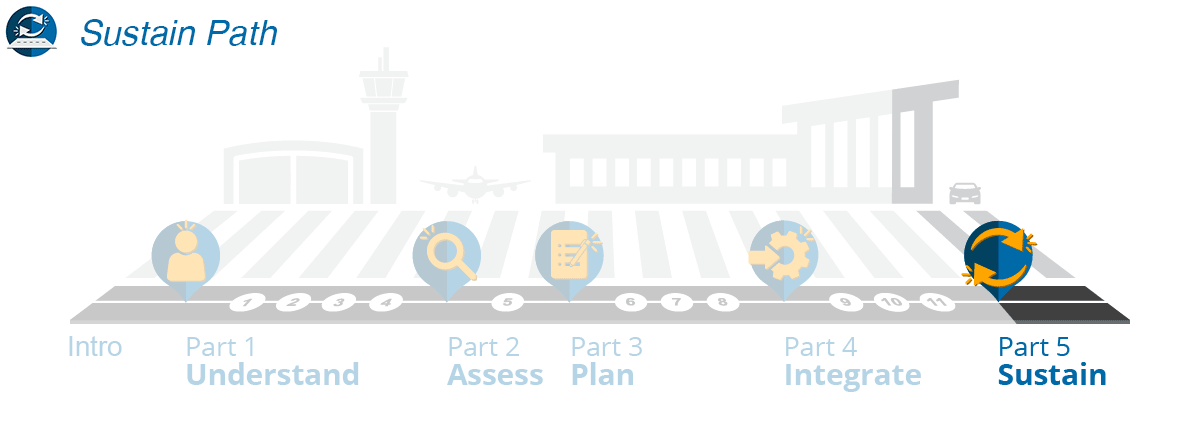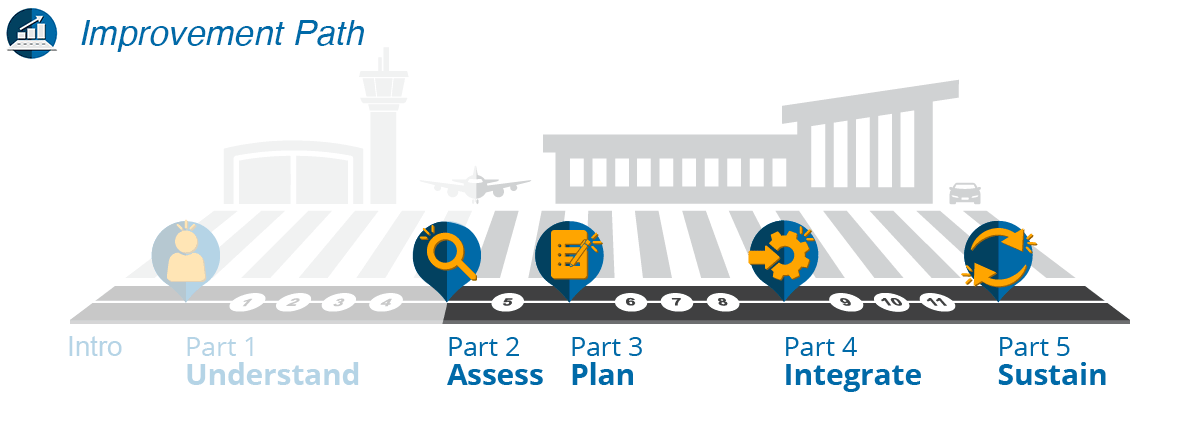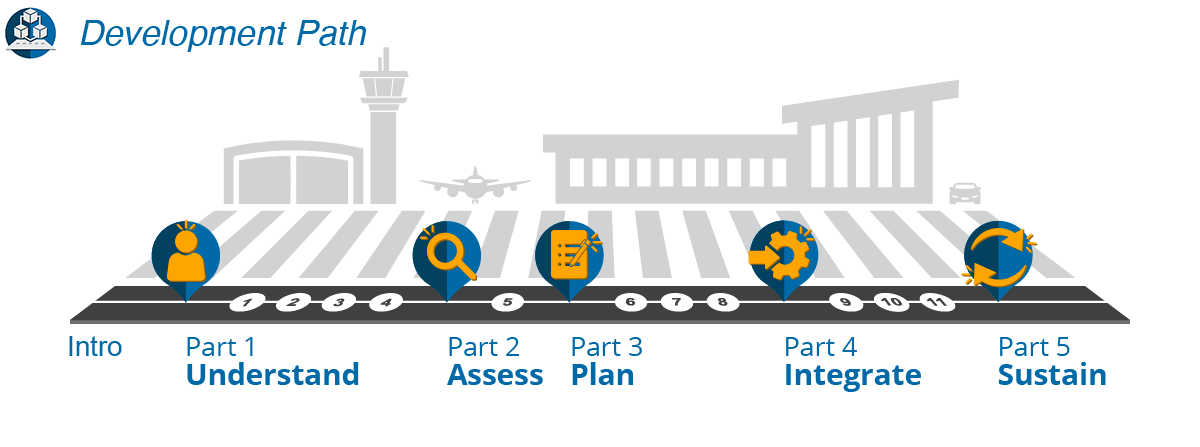Executive Summary
Part 3: Plan
Before you can fully integrate SM, you should develop the plan for who will be involved, what the aim of the program will be, and what SM management functions you will include. We have identified three planning steps which include identifying stakeholders (Step 6), establishing a vision and objectives for your program (Step 7), and defining your SM integration (Step 8). All three are necessary and become part of the framework you will develop for supporting the SMEM program.
One of the first efforts in planning is defining your key stakeholders. Who do you need to bring to the table in order to set your vision, objectives, and desired level of SM integration? Even if you have existing relationships, take this opportunity to reassess the stakeholders who you may need to be involved in building your SMEM program. These will include both on-airport and off-airport stakeholder representatives who provide support for the airport and are critical in a time of emergency response. These stakeholders extend beyond airlines, tenants, concessionaires, and fixed-base operators to local, state, county, and federal partners (regional and national levels). Each of these has a unique reach and following on SM channels; by coordinating your messaging efforts, you can multiply the impact of your SMEM program. All these stakeholders make up what is called the whole community for SMEM (see Figure 5).
Once you have defined your SMEM community, your focus should turn toward casting a vision for SMEM at your airport. The SM and EM managers at your airport (the champions for the SMEM program) should lead this effort, developing a unique shared vision in collaboration with your SMEM community.
Based on the identified risks and the priorities set in the vision, the SMEM program champions should work with all stakeholders to develop purposeful and realistic goals, as well as measurable and attainable objectives. In addition, you should tie these goals and objectives to your airport emergency and crisis communication plans. This will help ensure your SMEM program is woven throughout your response and is not a standalone effort. For example, for those new to SM, one of the first goals may be to understand your audience. Some objectives supporting this goal include identifying the exact demographics of your audience and determining the most valuable SM channels for your airport based on audience frequency of usage.
After completing your goals and objectives, it is necessary to determine what level of integration you can support and sustain. Each of the three levels of integration (basic, intermediate, and complete) are built on the following points of integration:
- Shared Understanding of SMEM and Associated Benefits
- Policies, Agreements, and Procedures
- SM Tools and Personnel Resources
- SM Training
- SM Drills/Exercises
As you jump into the levels of integration, you may decide a hybrid of two levels is a more ideal goal to start with than one level. That is perfectly understandable; the levels are meant to be guidelines from which you can build what works best for you.




